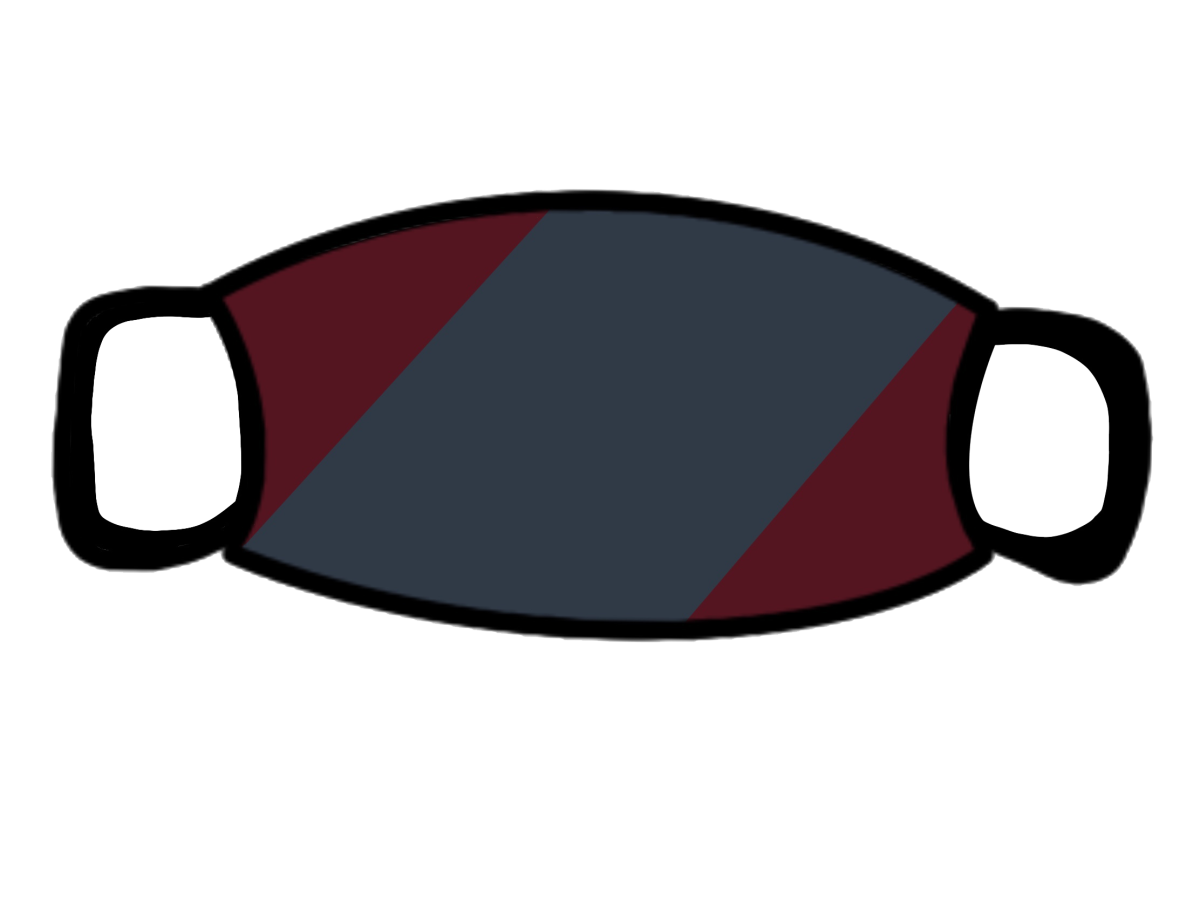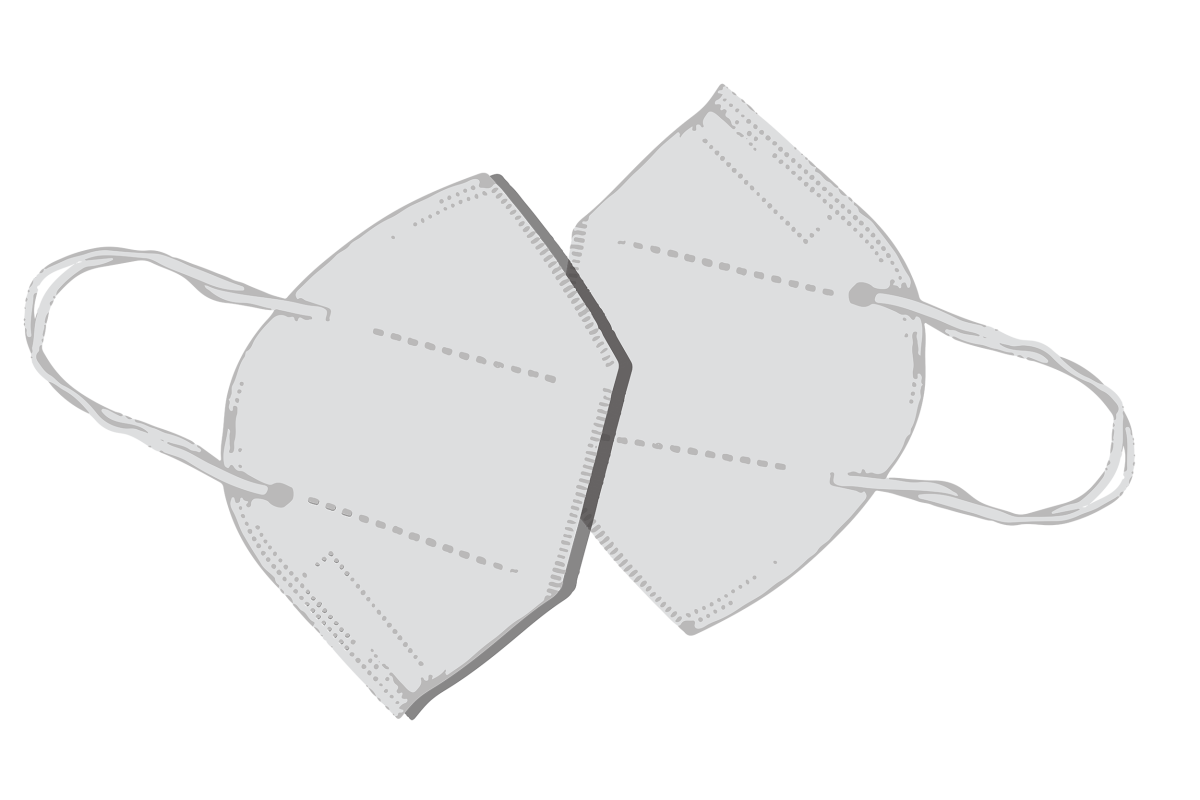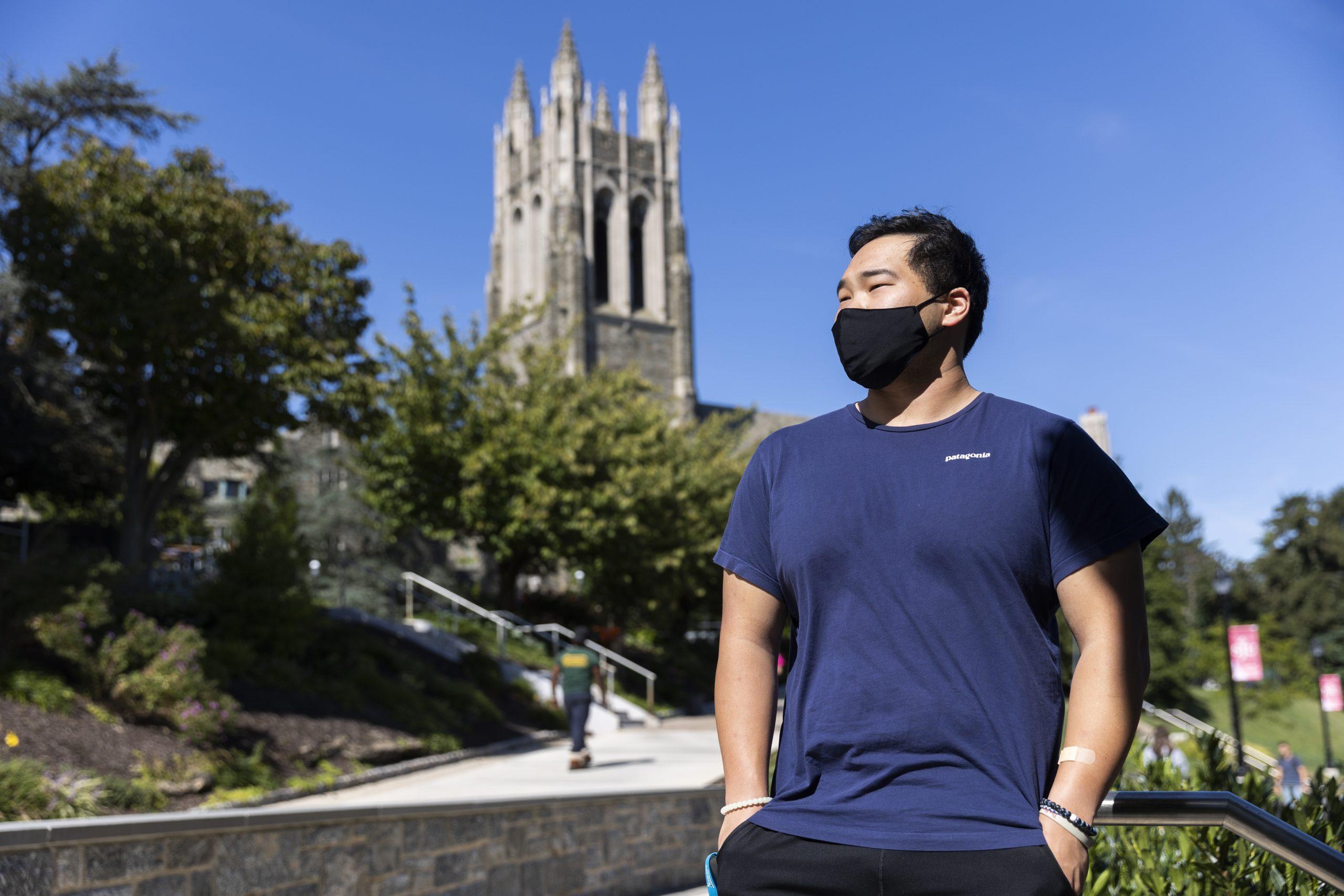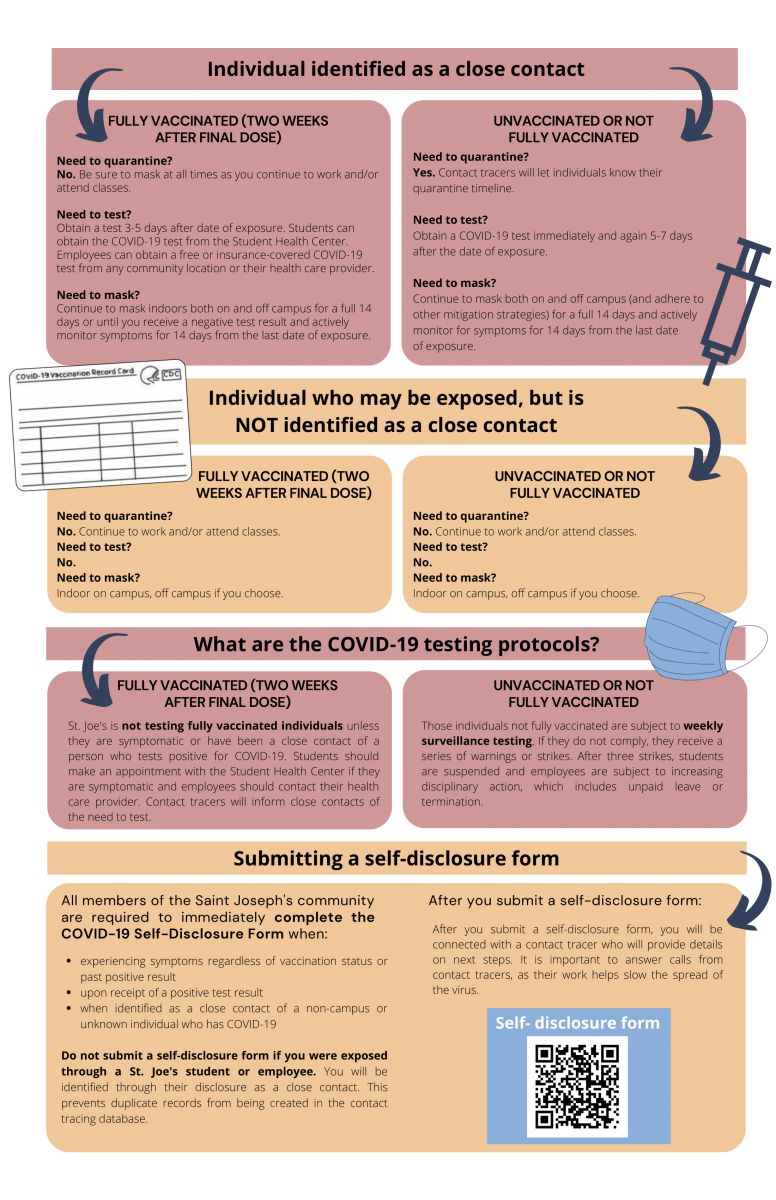St. Joe’s implemented mandatory pre-arrival COVID-19 testing for all residential students, as well as on-site entry testing for all undergraduate students. The university is conducting testing in partnership with Color Genomics, which administers tests via self-administered nasal swab testing kits, a different test than the spit test that was administered by Vault Health in the fall semester.
What is a self-administered nasal swab test?
Nasal swab tests are one form of molecular COVID-19 tests. Molecular diagnostic tests are considered the most accurate kind of COVID-19 test compared to rapid, antigen tests.
“Molecular tests are very sensitive because they are polymerase chain reaction (PCR) tests and they are able to detect very small amounts of viral material,” Michael McCann, Ph.D., professor of biology, said. “Antigen testing requires a lot more of the viral material to detect [COVID-19].”
Color utilizes a short swab self-administered tests. Other molecular tests, like nasopharyngeal tests which use a six inch long-swab to reach deep into the nasal cavity, must be administered by healthcare professionals
“You really aren’t able to do the full length test yourself because it’s really going all the way through your sinuses to the back of your throat,” McCann said.
In comparison, mid-nasal swabs are about an inch and a half to two inches in the nose and patients can more easily self-swab, McCann said.
In a letter to health care providers in October, the Food and Drug Administration (FDA) wrote, “[Nasal swab tests] are less invasive and generally more comfortable for patients, they can be self-collected by adult patients, and they can decrease the risk of exposure to health care providers.”
How accurate are self-swab COVID-19 tests?
Self-swab nasal tests yield similarly accurate results to the more invasive nasopharyngeal tests.
“There’s not really any difference between the two kinds of tests,” McCann said.
A small-scale study from Stanford University School of Medicine found that self-swabbing COVID-19 tests yielded safe and accurate results, with 29 out of 30 patients getting identical results across three samples. Similarly, a study from the Journal of Clinical Microbiology found that nasal swab tests are “nearly equivalent” to nasopharyngeal tests in their results.
In April, the FDA greenlit additional kinds of nasal swab tests, including patient collected tests and tests with samples pulled from the front of the nose rather than the depth of the nasal cavity.
“This is what happens under these sorts of circumstances,” McCann said. “We’re learning as we go. So, we start with the most rigorous stuff, but it becomes clear later that we can do it simpler.”
Additionally, the self-swab tests used by St. Joe’s are simpler and more accurate than the saliva tests used for arrival testing in fall 2020, which have a slightly higher rate of false-positive or false-negative results.
“There’s a lot of stuff in saliva, so accuracy is really depending on you not consuming anything before the test,” McCann said. “Food, water, mouthwash, can disrupt the sample. Inaccurate results are less likely with a nose test.”
What are some considerations when using self-swab tests?
One of the hurdles when using self-swab tests is human error. To try and correct this, the FDA recommends clear, step-by-step instructions for patients conducting their own tests.
If conducted incorrectly, samples may be unusable, and patients may receive inconclusive or false-negative results.
St. Joe’s experienced some of these obstacles with their pre-arrival tests. According to a Jan. 21 university announcement, issues with the samples included not arriving to the lab within 56 hours, not enough RNA being collected, swabs placed incorrectly in the test tube and students activating testing kits on a different day than the kit was mailed.
However, in the case of on-site entry tests, McCann said human error is able to be corrected more easily because volunteers can help patients if they have any issues, like dropping their sample.
If someone drops their sample, they can easily get a new swab and repeat the process, especially with a number of people guiding the process at entry testing, McCann said.
Once in the sealed tube, samples are secure and can be easily transported.
“[The tube] is going to preserve everything that’s in there,” McCann said. “Once it’s in the collection tube, [your sample] is going to be really stable.”


















































